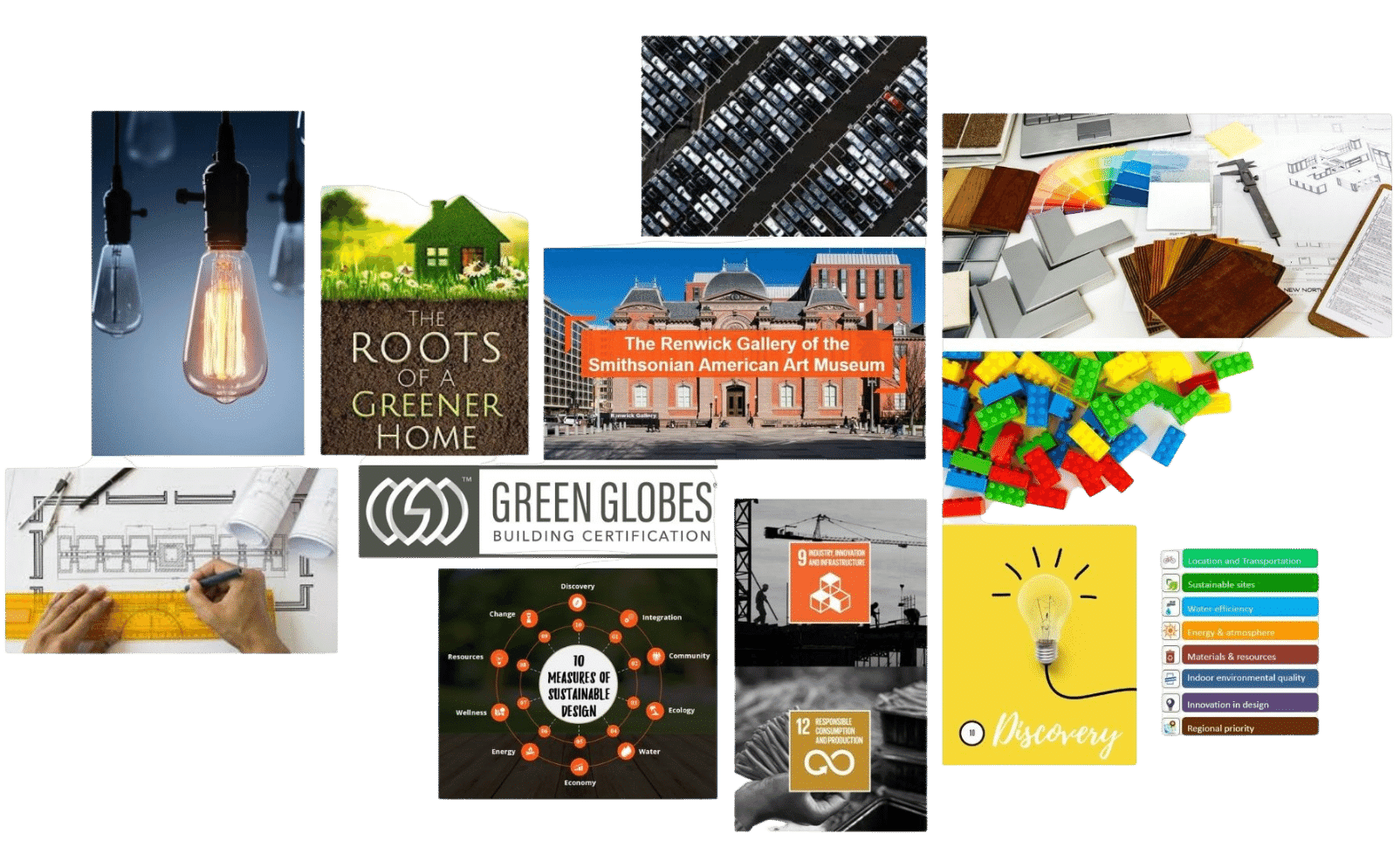WELL AP v2 Exam Prep Now Available!
Enhance your resume with the impressive new WELL AP credential.
We are so confident you will pass your WELL AP exam by following our recommended roadmap that we offer a 100% money-back guarantee*. If you follow our roadmap and do not pass the exam, you will receive a full refund on your exam prep. With GBRI’s help, you can earn the impressive WELL AP credential and take your career to the next level.
A WELL AP credential distinguishes building professionals who have in-depth knowledge of the WELL Building Standard, building codes, and standards in the sustainability industry. GBRI’s Study Materials allow you to earn your WELL AP in as little as 5 weeks through on-demand modules or 6 weeks through live sessions. You can attend live exam prep sessions online or use self-paced, online modules based on your schedule and preferences.
*Some conditions apply. Registrants must complete the entire exam preparation package and recommended roadmap, as well as successfully pass all mock exams prior to taking the WELL AP exam. Should all measures be taken as advised and the registrant not pass the exam, GBRI will refund charges for the exam preparation package purchased. Documentation of exam date and score are required.
We also offer discounts for students, military, groups, small businesses, and corporations. Contact [email protected] for more information.
WELL AP V2 MOCK EXAMS | ON-DEMAND
-
Simulated Practice Tests/Mock Exams
-
Accessible on all platforms and devices
-
Instant access
-
Developed by industry experts
-
Answer explanations for each question
-
Timed mock exams designed to simulate the real exam
ALL-INCLUSIVE WELL AP V2 EXAM PREP - STUDY WITH WELL FACULTY | ON-DEMAND
-
5 on-demand sessions
-
Taught by WELL Faculty
-
Instant access
-
Answer explanations for each question
-
Everything you need to prepare for your WELL AP V2 exam
-
Pass your exam on the first try – guaranteed
ALL-INCLUSIVE WELL AP V2 EXAM PREP -STUDY WITH WELL FACULTY | LIVE
-
6 Live, online exam prep session
-
Taught by WELL Faculty
-
On-demand access
-
Everything you need to prepare for your WELL AP V2 exam
-
Pass your exam on the first try – guaranteed (100% Pass Rate!)
Platinum
Ideal for life-time learners with access to all our courses-
LEED Green Associate Exam Prep
-
LEED AP BD+C Exam Prep
-
LEED AP O+M Exam Prep
-
Access to 250+ Premium Sustainability Courses, Articles
Upcoming Event
WELL AP V2 Exam Prep: Live Session 3- Jul-Aug 2024
Ready to boost your credentials with the prestigious WELL AP certification? Let us guide you on a journey to earning your WELL AP Credential in as little as 6 weeks. We understand that your schedule and learning style are unique, so we offer options that fit your preferences. Join our …
Not sure our exam prep is right for you? Register for the first session for FREE which allows you to try the series before you buy!
How will this work?
REGISTER

GET ACCESS

STUDY

PASS YOUR EXAM

Testimonials and Reviews










DEVELOPED BY INDUSTRY EXPERTS
Developed by industry leaders with years of real world LEED & WELL experience.
ONLINE ANYTIME ACCESS
Complete your exam prep with our easy to navigate platform that makes exam prep easier than ever before.
MONEY BACK GUARANTEE
Our exam prep packages are exactly what you need to pass your exam on the first try, all with a money-back guarantee. Follow our recommended road map to pass your exam on the first try or you get your money back!
INSTANT ACCESS
Instant access to your exam prep material on all platforms and devices.
Groups & Discussions
Join the conversation! Our new groups and discussion board allow users to connect and socialize with likeminded individuals.
Sign Up For Our Email List
| Thank you for Signing Up |


important things you should know
Questions And Answers
The WELL Building Standard (WELL) focuses on the people in the building. The WELL Building Standard places human health and comfort to the forefront of building practices and reinvents buildings that are not only better for the planet, but also for the people. This is the first standard of it’s kind that focuses solely on the health and wellness of building occupants.
Other than being administered by GBCI, WELL and LEED are both independent building rating systems. LEED focuses on sustainability as it pertains to the building environment along with occupant comfort. On the other hand, WELL focuses solely on the health and wellness of building occupants. WELL complements LEED and other rating systems geared towards environmental sustainability.
GBRI’s Study Guide and On-demand Modules are both standalone exam prep resources. Depending on your preference or learning style, you may choose one over the other. You don’t need both, the study guide and on-demand modules. However, you may use the study guide to compliment the on-demand modules. For example, you could start with the on-demand modules and use the guide to review what you learned or vice versa. While reviewing, pay close attention to underlined text in your study guide. Take the practice exams after completing each module/knowledge, domain/concept, and review answer choices to identify topics that may need additional attention. You may also utilize the concept matrix as a learning tool.
Step 1 – Sign-up for a FREE WELL online account @ wellonline.wellcertified.com
Step 2 – Register for the exam by paying applicable fees
Step 3 – Schedule the exam through Prometric
The fee varies based on your location, your organization’s USGBC member status, and your LEED accreditation status. In the U.S. the fee is $299 and $99 for students.
The questions within the WELL AP Exam test candidates’ abilities to recall factual information learned from the WELL standard guide, identify a solution for a scenario or problem given in a question, and analyze the relationship or interaction between multiple elements of the rating system.
The exam is similar to what we see with the LEED Green Associate, AP, and other credential exams. It is a computer-based, multiple choice exam, that is taken at a Prometric testing center. The exam is 2.5 hours long and contains 115 questions including 15 unscored items. The exam is in English. There are questions that require you to pick multiple correct answers (no partial credit). All items are delivered randomly throughout the exam and candidates are not informed of an item’s status. So candidates should respond to all the items on the exam. The WELL AP exam is scored between 125- 200. You have to earn a 170 or higher to pass and earn your WELL AP.
Before taking the mock exams, we recommend completing the individual concept quizzes after each concept. Once you are done studying the guide, take each of the timed mock exams. Once done, review all answer choices. Use the review process to strengthen what you already know and to fill your gaps. Then retake the mock exams. We recommend scoring more than 90% before moving on to the next mock exam.
Here are the WELL AP Core Exam Resources from IWBI.
- IWBI Core Resources – https://www.wellcertified.com/toolkits/well-ap
- Register for GBRI WELL AP Exam Prep – https://www.gbrionline.org/well-ap-exam-preparation/
One must take and successfully pass the WELL AP exam. Candidates must be 18 years or older. WELL project experience is recommended, however it is not a requirement! Candidates take the WELL Exams at Prometric Centers around the world (just like the LEED exams).
Yes. GBRI WELL AP Exam Prep Package offers everything you need to pass the exam.
1. On-demand Audio/Video Modules for each Knowledge Domain/ WELL Concept
2. Standalone Study Guide
3. Practice Quizzes for each Knowledge Domain/WELL Concept
4. 5 Mock Exams
5. Memorization Tools (FREE)
The knowledge domains or concepts are the most important to study for the test. Understanding how many questions you can expect from each knowledge domain or concept will help identify how each section is weighed. This is noted in the beginning of each knowledge domain or concept. At a minimum, identify, understand, and learn the context of each feature, requirement, and path involved. Pay close attention to texts that are highlighted, italicized, and underlined.
We have identified and listed several memorization techniques within the guide, such as Mnemonics (using the first letter of each word to create an easily remembered phrase or word). Choose the ones that work for you or use them to improvise your own techniques that suit you, as each of us have a different way of learning and recalling information. According to Edward Bolled, “We remember what we understand; we understand only what we pay attention to; we pay attention to what we want.” Some of us identify and attach information to numbers, while some identify them to sound, music, and words. Studies have shown that revision is the key to long term memorization. Add notes or annotate while you read the guide for the first time. Review a concept after you read it once, pay attention to underlined text, and your notes. Review it again before going to bed and again the next day while trying to recall requirements for each WELL feature. Take the practice quizzes. Review your answers and revise the guide as needed. You should review the guide again after 1 day, 3 days, and 1 week. Each time you review, you don’t have to read the whole concept, just focus on key items or underlined texts. You should be able to recall the information needed to pass the test.
You are not required to memorize every single threshold, number, and reference standard. However certain concepts carry more weightage than others. We have identified important ones by highlighting, italicizing, or underlining the texts. Please memorize those.
Identifying a feature, whether it ‘s a pre-condition or optimization, is important for the exam. There’s an easy way to identify the optimizations within each concept area; we have noted it in the beginning of each concept.
Intro to WELL v2 & becoming a WELL AP
WELL AP Exam Prep: 10 Things and WELL Certification
WELL v2 - Are you ready for what’s next? - Dubai
WELL

GBRI WELL AP Version 2 Question Bank and Mock Exams
GBRI’s WELL AP Question Bank and Mock Exams are a collection of 400+ practice questions representing each of the 10 WELL Concepts under version 2.0, and 3 timed simulated WELL AP Mock Exams.

WELL: What’s it all about? + Case Studies
In this course, we learn what the WELL Building standard is, how it’s organized, and how the changes it promotes can improve health.

A Job WELL (Building Standard) Done!
The WELL Building Standard is different in that it connects the health and well-being of people inside the building. Join us as we review the elements of the WELL Building Standard, exam, and credential.

I am Doing WELL! Are You?
Join us as we explore the Building Standard, concepts, features, and certification process. To help you to understand if the WELL AP Credential is right for you.












